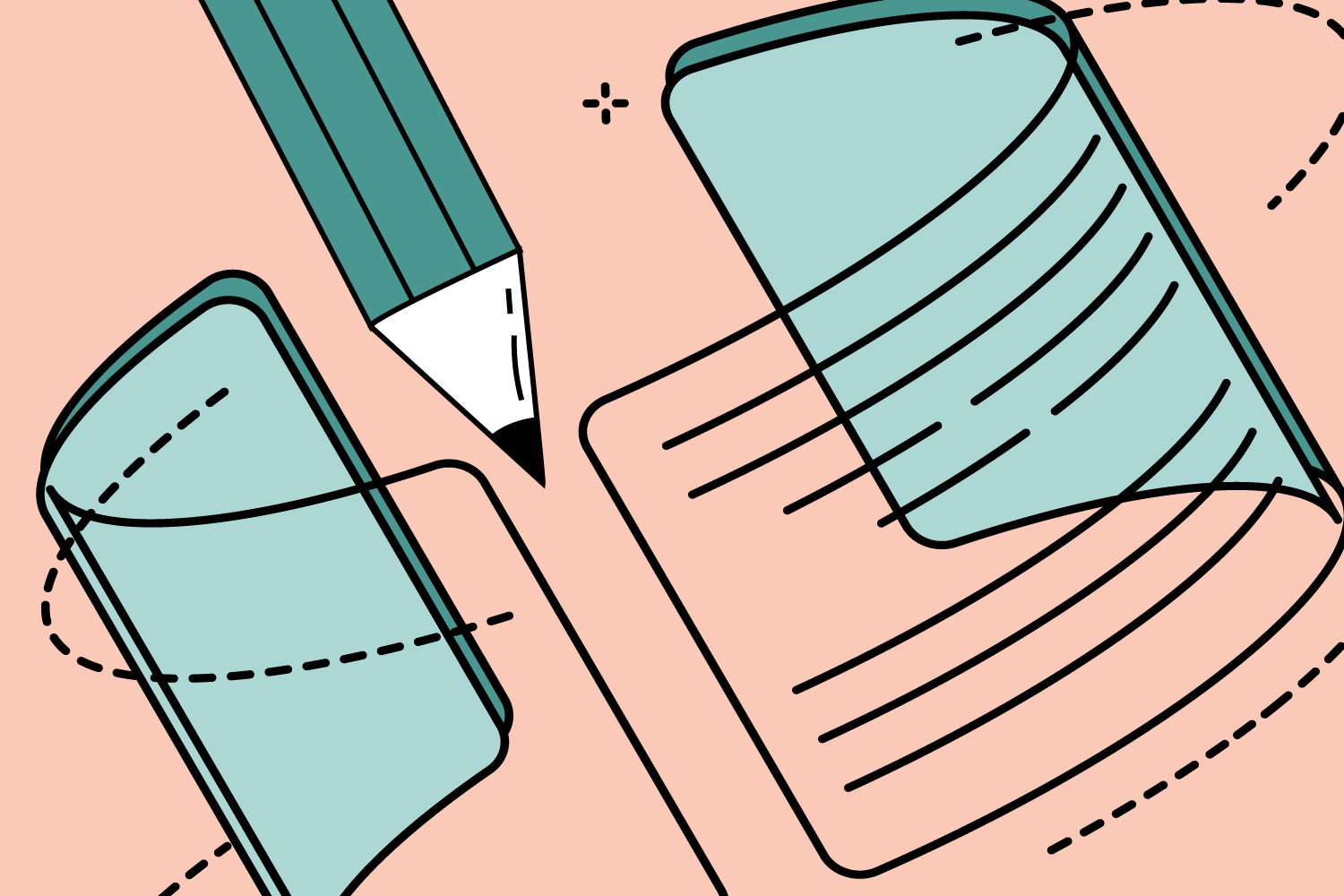Are you in the process of writing a blog and thinking about what can you do to make a headline more compelling? No wonder since 8 out of 10 people will read the headline on average, but only 2 out of 10 will read the rest.
The headline is the most crucial part of any content, whether a blog post, article, or social media post. It’s the first thing readers see, determining whether they will read the rest of your content.
Headlines help someone decide if the rest of your content is even worth reading in the first place. Make it clickable.
Whether you’re writing a blog post, article, or social media copy, an attention-grabbing headline captures the reader’s interest. It encourages them to delve deeper into what you have to say.
So, what can you do to make your headline more compelling? In this blog post, we will provide several proven strategies and copywriting tips to help you craft effective headlines that grab attention and engage your audience. No tricks.
What is the meaning of headline
Headlines are strategically-written attention-grabbing statements used in marketing and copywriting to get your reader to engage with you. It can be a click on a Facebook ad or reading the sales email.
The headline should be clickable, not clickbait, providing the user with educational, entertaining, or inspirational value.
Although the headlines are the first thing the reader will see, they are the last thing you should write. They are the single most effective and essential part of any sales message. Who will click, and who will keep scrolling and continue reading? It all depends on the headline.
What can you do to make a headline more compelling and clickable?
Understand your audience
The first step in creating a captivating headline is understanding your target audience. Who are they? What are their interests, desires, and pain points? By comprehending your audience’s needs and aspirations, you can tailor your headlines to resonate with them effectively.
You need to understand what resonates with them, what they seek, and their pain points. The more you know about your audience, the easier it is to write a headline that will connect with them. If you’re unsure what your target audience wants, try researching to understand their preferences. Check forums like Reddit and Quora to see what users say about a product or service.
Speak their language, use relevant keywords, and address their specific challenges or desires. Aligning your headline with your audience’s interests will make it more compelling and increase the chances of engagement. Once you learn what works for your target audience, you can design your strategy to write headlines and utilize it to generate long-term connections.
Be specific and clear
Be as straightforward as possible in your headline to give the reader an idea of the article. Your headline should give readers a clear understanding of what they will get when they read your content. Use numbers and data to make your headline more specific, as it provides a clear picture of what readers can learn from your content.
For example, instead of “Ways to Improve Your Writing,” consider writing “7 Proven Ways to Improve Your Writing.” This is more specific and provides readers with a clear expectation of what they will get from your content.
Use emotion
People are more likely to click on headlines that trigger an emotional response. Using emotional words like “amazing,” “shocking,” or “heartbreaking” can make your headlines more interesting and encourage readers to click. Moreover, try to understand what will evoke emotional responses. Look for the emotions that your audience is likely to feel and craft your headlines accordingly.
Use numbers
Numeric lists, statistics, and other data can make a headline more exciting and give the reader a reason to read on. Using numbers in your headline can increase credibility, boost interest, and make the topic more specific. Adding numbers helps to give the readers an idea of what to expect and makes it easier for people to share your content. For example, instead of “Ways to Save Money,” use “10 Proven Ways to Save Money.”
Keep it short and simple
Your headline should be easy to understand and digestible, especially in the age of short attention spans. Try to keep it around 6 to 8 words long. Long, complex, or difficult-to-understand headlines could put readers off clicking on your article. Short, impactful headlines create a sense of urgency, which compels readers to click and read more.
A too-long headline can be overwhelming and challenging to read, so keep it concise and to the point. Example: Blockchain and KYC: Enhancing Security and Efficiency
Offer a solution
Every headline should offer a solution to a problem. People are always searching for ways to improve their lives, and your headline should promise them something they can’t ignore. For instance, instead of “How to See Liked Posts on Instagram,” use “How to See Liked Posts on Instagram in 5 Easy Steps.” By offering a solution to a problem, you can make your headline more compelling, and readers are likelier to click and read.
Use power words
Powerful words evoke an emotional response and make your headlines more persuasive. These words can emphasize a point or create a sense of urgency. Choose strong, attention-grabbing words that evoke emotions and create a sense of urgency. For example: “remarkable”, “proven,” “unbelievable,” “extensive”, “that work,” “revolutionary”, “outstanding”, etc. These words add an element of excitement, mystery, and intrigue to your headline, making them more compelling.
Example: Transform Your KYC Process with Remarkable Potential of Blockchain Technology
Create curiosity
The idea is to make your headline so intriguing that readers can’t help but click on it to find out more. Curiosity can be created by asking questions, teasing readers with a hint of what’s to come, or using a provocative statement. For example, instead of “The Best Places to Visit in Europe,” consider writing “Get Lost in These Hidden Gems: Europe’s Best-Kept Secrets.”
Optimize your headline for SEO
An essential part of creating a compelling headline is to optimize it for SEO. This means including relevant keywords that your target audience is searching for. Use keyword research tools to identify long-tail keywords relevant to your content and include them in your headline. However, don’t stuff your headline with too many keywords, which can negatively impact readability. Keep it natural and informative.
Test and iterate
Write many, write often, and keep testing your headlines. Crafting compelling headlines is not an exact science, and what works for one audience or platform might not work for another. Therefore, testing and iterating your headlines to find the most compelling versions is crucial.
A/B testing can be employed by creating multiple variations of headlines and tracking their performance. You can also use some headline analyzer tools to help you make better headlines.
Analyze metrics such as click-through rates, engagement, and social shares to understand which headlines resonate best with your audience. Continuously refining and optimizing your headlines based on data-driven insights will help you consistently improve your results.
Extra tips by our copywriter

Effective headlines are concise and to the point: When I write, I aim for brevity while still delivering a powerful message. Avoid unnecessary words and focus on conveying the core idea.
Ensure that the headline aligns with the content it represents: Misleading or clickbait headlines can harm your credibility and lead to disappointed readers. Maintain coherence and ensure the headline accurately reflects what the reader will find in the content.
Edit and polish your headline: Review it for grammar, spelling, and clarity. Make sure it’s error-free and easy to understand. Consider rephrasing or rewording if necessary to enhance its impact. Remember, writing compelling headlines requires practice and experimentation.
Ask a question: A headline in the form of a question can be intriguing and encourage the reader to click for more information. Example: How Can Blockchain Revolutionize KYC Process for Enhanced Security and Efficiency?
Add a sense of mystery: Create a headline that makes the reader curious and wants to know more. Example: The Future of KYC Process: How Blockchain is Changing the Game
Use active voice: Active voice headline is more engaging and encourages the reader to take action. Example: Transform Your KYC Process with Blockchain Technology: A Step-by-Step Guide
3-step formula for writing a compelling headline
- Hook
- Creating an open loop
- Speak to your target audience
To write a compelling headline, follow a three-step formula that includes the hook, creating an open loop, and speaking to your target audience. Let’s break down each step:
1. Hook
The hook is the first step in grabbing the reader’s attention. It’s a brief, attention-grabbing statement that piques their curiosity and compels them to read further. The goal is to intrigue and make the reader want to know more. This can be achieved by using powerful words, asking a thought-provoking question, or presenting a bold statement. The hook should be concise and capture what makes your content or offer unique.
Example: “Discover the Secret to Effortless Weight Loss in Just 30 Days!”
2. Creating an open loop
The next step is to create an open loop. An open loop is a technique where you introduce a problem, question, or curiosity-inducing statement without providing an immediate answer. This creates a sense of incomplete information and compels readers to continue reading to find the resolution. It triggers their curiosity and makes them want to know the solution or the answer you have to offer.
Example: “Are You Making These Common Mistakes That Sabotage Your Weight Loss Efforts?”
3. Speak to your target audience
Finally, it’s crucial to tailor your headline to your target audience. Understanding your audience’s needs, desires, and pain points allows you to speak directly to them and make the headline more relatable and appealing. Use language that resonates with your specific audience, addressing their concerns, aspirations, or goals. Doing so creates a connection and makes them feel your content or offer is designed specifically for them.
Example: “Lose Weight and Feel Confident Again: The Ultimate Guide for Busy Moms Who Want to Get Their Pre-Baby Body Back!”
By incorporating these steps into your headline writing process, you can increase the chances of grabbing your reader’s attention, engaging them, and enticing them to explore your content further.
Effective headlines are concise and to the point. Aim for brevity while still delivering a powerful message. Avoid unnecessary words and focus on conveying the core idea.
Ensure that the headline aligns with the content it represents. Misleading or clickbait headlines can harm your credibility and lead to disappointed readers. Maintain coherence and ensure the headline accurately reflects what the reader will find in the content.
Pro tip: Edit and polish your headline. Review it for grammar, spelling, and clarity. Make sure it’s error-free and easy to understand. Consider rephrasing or rewording if necessary to enhance its impact.
Remember, writing compelling headlines requires practice and experimentation.
Because…
Practice makes it perfect
Writing a compelling headline doesn’t have to be overly complicated. As you’ve seen from these examples and variations, it’s much easier than you think.
Keep your headline as short and specific as possible while actively engaging the reader with intrigue or curiosity. You can experiment with different words, punctuation marks, questions, and emotions to create a headline that best expresses the concept behind your article.
A good headline is the perfect balance of clarity, relevance, emotion, power words, and length, urging the readers to click and engage with your content.
Crafting the perfect headline is an art, and it takes time, experimentation, and constant testing to come up with exciting headlines that will boost your engagement.
Need a hand with your copywriting? Our talented team is ready to craft compelling content that grabs attention, tells your story, and drives actual results. Let’s get started.
